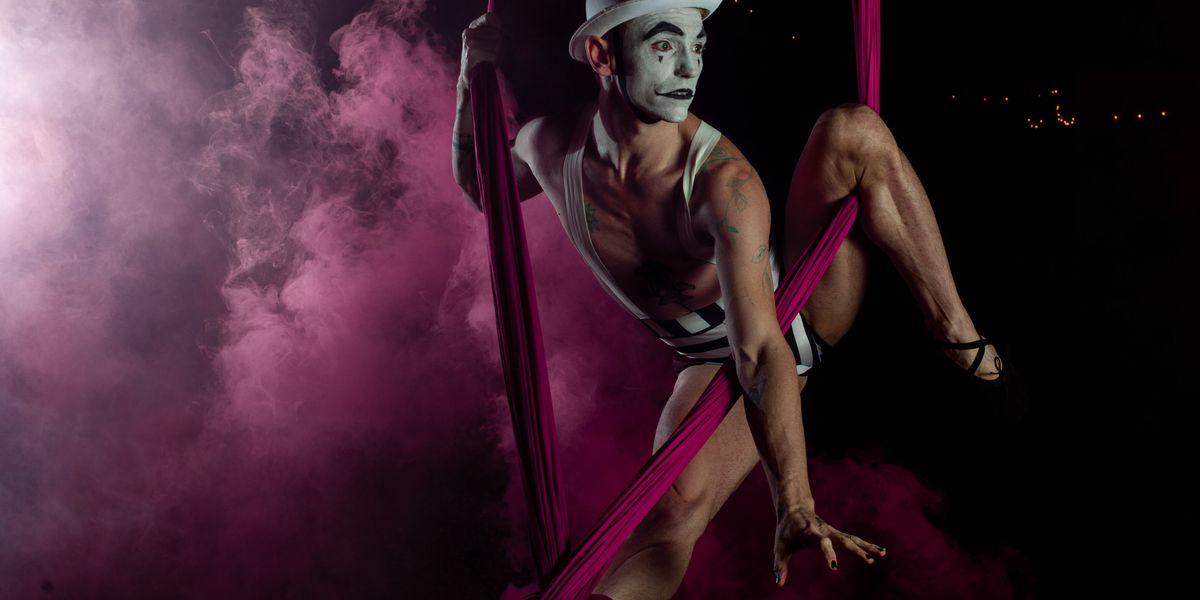Why More and More Dancers Are Getting Into Aerial
These days, you don’t have to be in the circus to learn how to fly. Aerial dance has grown in popularity in recent years, blending modern dance and circus traditions and enlisting the help of trapeze, silks, hammocks, lyra and cube for shows that push both viewers and performers past their comfort zones.
More dancers are learning aerial than ever before. Besides adding new skills to your resumé, becoming an aerialist opens up a new realm of possibilities.
Why Take to the Skies?
Many dancers are drawn to aerial work for the diverse performance prospects—from night club acts to Broadway stages to concerts. “I do a fun burlesque number in Atlantic City every Thursday,” says Hannah Risner, a New York City–based aerialist. “But then I can also do corporate work at someone’s holiday party as the pretty dancer in the air.”
Having aerial skills can make you more hirable, says Joshua Dean, co-owner of Aerial Arts NYC. “For me, becoming a circus performer actually brought me back into the musical theater world because they wanted my specific skills.”
Aerial also provides the opportunity to be both choreographer and dancer. “So much of the time when I was a dancer, I was doing other people’s work,” says Dean. “But as a circus performer, you get to create your own work.”
Longevity is another draw. “One of the reasons I moved away from traditional dance was because my body was hurting,” says Dean. “Doing my own work, I can make changes if my body doesn’t feel good that day.”
How to Become an Aerial Dancer
Like concert dance, aerial is rooted in proper training and technique. But there is no single path towards a professional career. Many aerialists were concert dancers or theater performers, while others began as circus artists.
Dancers who want to make the leap to aerial should first find an experienced coach or training program that emphasizes safety. Training takes time, and attempting a skill that they are not qualified to perform could cost them their career.
As aerial dance becomes more prominent, university dance programs are taking note. Both University of Wyoming and University of New Hampshire implement aerial training into their curriculum, and University of Colorado at Boulder offers an MFA program with an emphasis on aerial and works closely with Frequent Flyers Aerial Dance.
What Dancers Should Know
While there are a handful of aerial companies (like Frequent Flyers, UpSwing Aerial Dance Company and A-WOL Dance Collective) that offer traditional company positions, most aerial dancers are “gig artists” who are hired to perform their acts at events. It may seem like competition would be steep for these jobs, but the fact that dancers create their own routines—which they generally perform at auditions rather than learning any set choreography—works to their advantage. “There may be 15 other short, strong brunettes, but no one does my act, and I don’t do anyone else’s act,” says Risner.
Today, there are enough opportunities to teach and perform that a full-time aerial career is possible. “People have danced hanging off hot air balloons,” says Nancy Smith, founder and artistic director of Frequent Flyers. “Our company has danced off the side of a 33-story building. Everyone is continuing to push the boundaries of what’s possible both physically and creatively, so the field of aerial dance will continue to develop.”




